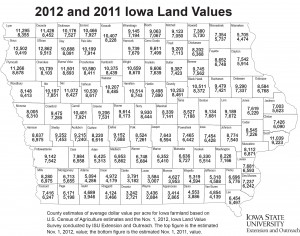CLICK HERE for the latest market quotes from the Iowa Agribusiness Network!
CLICK HERE for the latest market quotes from the Brownfield Ag News Network!
CLICK HERE for the latest market quotes from the Iowa Agribusiness Network!
CLICK HERE for the latest market quotes from the Brownfield Ag News Network!
Info from the Atlantic Animal Shelter.
Podcast: Play in new window | Download (4.2MB)
Subscribe: RSS
U-S Agriculture Secretary Tom Vilsack is urging the U-S House and Senate Ag Committees to get a Farm Bill ready. Once created, Vilsack says that legislation could be attached to any agreement to avoid the fall off the “fiscal cliff” of automatic tax hikes and budget cuts which loom on January 1st. “That would provide a vehicle for the passage of a food, farm and jobs bill,” Vilsack says. “In order for that to happen, they could not be in a situation where they would ask folks to wait while they crafted and drafted whatever compromises they could reach. They need to do that work now so that when and if there’s a resolution to the fiscal cliff, the farm legislation could be attached to it without delay.”
Vilsack, a former Iowa governor, says it will take a lot of work to get a new Farm Bill ready for the upcoming growing season. “We will do everything we can to move heaven and earth,” Vilsack says. “Once Congress does its job, we will do our job in a timely way. It obviously depends on at what point in time they ultimately get their work done.” The automatic budget cuts that will come with the new year will impact practically every single U-S-D-A program, what Vilsack says would be a disaster.
“That gives me no capacity to manage,” he says. “It’s eight-and-a-half or eight-point-seven percent, whatever it is, across the board, virtually every line item. You can’t transfer. The only way you’re going to deal with it is by reductions in force and that is extraordinarily cumbersome.” Without action by Congress, a series of 500-billion dollars in tax increases and 200-billion in budget cuts will automatically take effect on or around the first day of January, a leap some analysts fear could prompt another recession.
(Radio Iowa)
The U-S Army Corps of Engineers continues to cut water releases from Gavins Point Dam into the Missouri River. Jody Farhat, chief of the Water Management Bureau for the Corps in Omaha, says releases were taken down to 14-thousand cubic feet per second (CFS) over the weekend. “Our inital plan was to hold that just for three days before stepping down to 12 but we’re getting down to the level where some of the water intakes are coming into concern,” Farhat says. “We’ll probably hold the 14-thousand for five or six days, let that decrease get down past those water intakes and see if we are able to make any further reductions after that.”
By comparison, the average flow has been around 38-thousand CFS but during last year’s record flooding, flow rates hit a record of 160-thousand CFS. The current 14-thousand is almost a trickle by comparison. Farhat says low water is causing transportation issues on the Mississippi River, but they can’t really help with that. Several governors, businesses and farm groups are asking Congress and the Corps to boost water levels on the Missouri to help keep barges moving on the Mississippi. “There is a lot of concern about the impacts of this reduction on navigation on the Mississippi River and we’re getting a lot of calls and monitoring that situation,” Farhat says. “In reality, Congress has not authorized us to operate this reservoir system for the Mississippi River, so, we intend to get down to our winter release rate and hold it there, unless something changes.”
Levels of the upstream reservoirs continue to fall. Farhat says that will be a balancing act all winter long. “Most of the reservoir storage is in the upper three, and those are currently between five and 14 feet below normal right now,” Farhat says. “We’ll be moving water between the reservoirs over the winter period and by the start of next year’s runoff season, each of those upper three reservoirs will be between 10 and 12 feet below the desired operating level at the start of a run-up year.” The Missouri River level at Yankton is now 16 feet lower than it was during the record flooding in the summer of 2011.
(Radio Iowa)
The Cass County Board of Supervisors Wednesday morning approved the first of two readings of an Amended Ordinance that pertains to the Amaizing Energy TIF District. The action followed the first of two public hearings on the matter, with the second hearing and second reading to take place during the Supervisor’s meeting on Dec. 19th.

Cass County Auditor Dale Sunderman points out the parcels in the Amaizing Energy Urban Renewal/TIF District.
Prior to the public hearing, Cass County Auditor Dale Sunderman said the Board, on May 23rd 2007, enacted Ordinance 28, which provides for the Division of Taxes levied on taxable property in the Amaizing Energy Urban Renewal Area. He said the amendment proposes that certain property included in the definition of an “Urban Renewal Area” in the ordinance, be deleted from that definition. (A full description of the parcels and sections are available at the Auditor’s office)
After the public hearing was closed and the matter discussed that the Board, upon hearing no objections to the amendment after first reading, voted to approve it.
The annual survey from Iowa State University shows farmland values increased almost 24-percent over last year to a new record high of an average cost of eight-thousand-296 dollars an acre. I-S-U economist, Mike Duffy compiles the numbers from the survey. “Basically what we found was higher-quality ground moving at a pretty good level, and lower quality ground not increasing so much,” Duffy says. “For example northwest Iowa was up almost 34-percent, where southeast Iowa was up only nine percent.” Duffy says record corn and bean prices are part of the reason for the increase.
I-S-U economist, Mike Duffy compiles the numbers from the survey. “Basically what we found was higher-quality ground moving at a pretty good level, and lower quality ground not increasing so much,” Duffy says. “For example northwest Iowa was up almost 34-percent, where southeast Iowa was up only nine percent.” Duffy says record corn and bean prices are part of the reason for the increase.
“The commodity prices were a primary driver, another driver was the very low interest rates that we have. People also said lack of alternative investments was another reason,” according to Duffy. The faster increase in the price of the better quality ground goes hand-in-hand with the amount of money to be made with the higher commodity prices. “I think the higher quality ground is going to be less susceptible to weather problems for the most part, it’s a more stable return if you will than some of the lower quality ground. And people are perceiving it to be a better buy than the lower quality,” Duffy says.
O’Brien County had an estimated 12-thousand-862 dollar average value, the highest average county value. O’Brien County also had the highest percentage increase and highest dollar increase in value, 35-point-two percent and three-thousand-348, respectively. The 23-point-seven-percent increase marks the third straight year the land values have increased by 15-percent or more. Duffy doesn’t agree with those who say the high price bubble of ag land is going to eventually burst. “I don’t think that it’s going to be a bubble pop. I think it would either be be more akin to a tire getting a nail in it, where we’ll gradually adjust down. Or it may even be that we don’t adjust down much, but the rate of increase will either slow or slightly go down,” Duffy says.
He does think the double-digit increases in land prices may not last much longer. “I don’t see any way that we can maintain the rate that we’ve had,” Duffy explains. “The last three years we’ve increased almost 64-percent, and that’s just not sustainable.” He says the supply and amount of corn and soybeans that are grown will make an impact on the land prices moving ahead.”The world is already responding by planting more, so we’re going to see adjustments,” Duffy says. “Now all that said though, the drought that we’re experiencing right now is very serious. And what it portends for next year is kind of anybody’s guess right now. But if we don’t get rain, we’re not going to have a crop. So it doesn’t matter how high prices are.”
In Cass County, the value of Ag land increased $1,426 over last year, to $7,984 per acre. In Audubon County, land increased just $25 shy of $2,000 per acre, to $9,215. In Adair County, land prices increased a little more than $1,100, to $6,425. In Adams County, the value of land went up a little more than $800, to $5,094. In Pottawattamie County, the price of land went up $1,600 from last year, to $9,142 per acre. Land went up nearly $1,800 in Shelby County to $9,262. In Guthrie County, the price went up just over $1,600 to $8,220. And, Montgomery County realized a $1,058 dollar price increase, to just over $6,710 per acre.
This is the highest state land value recorded by the survey and the first time county averages have reached levels over 10-thousand dollars an acre.
(Radio Iowa) (more info. at http://www.extension.iastate.edu/article/farmland-value-reaches-historic-8296-statewide-average)
The Iowa Dept. of Natural Resources says two men have been charged following an incident that occurred Saturday afternoon in Harrison County, when a shotgun slug was fired into an occupied home while deer hunting. 64-year old Stephen Kenkel, of Grinnell was charged with one count of shooting over a roadway and one count of shooting within 200 yards of an inhabited building. 52-year old Gail C. Lamberson, of Logan was charged with one count of shooting within 200 yards of an inhabited building.
The incident occurred when deer were crossing the roadway between Kenkel and the house and Kenkel shot at the deer. The shot went through a wall eventually lodged in a ceiling inside the house. The house was occupied at the time, but no one was injured.
The Iowa Department of Agriculture wants another infusion of cash to close down more ag drainage wells which officials say present a danger to Iowa’S groundwater. Some 250 wells have been plugged since the program started in the late 1980s. Ag Secretary, Bill Northey, wants one-point-five million dollars to treat another dozen wells: “Those right now drain directly into aquifers, that are drinking water aquifers, and that could be a concern,” Northey says. “We’ve been fortunate, we have not had problems with that through this time but it does make sense to close them to the extent that we can.”
Iowa’s 1987 Groundwater Protection Act called for closing the wells, which farmers installed years ago to make Iowa’s wet soils workable. Northey says the toughest ones are still left, where the soils are harder to drain. “That’s why it may make sense on some of those, if it’s an 80 acre or a 40 acres that’s drained, it may be less expensive to take part of that out of production than to find a drain a long ways away and pay a large cost,” Northey says.
After the latest round of closings, Northey says the remaining projects will cost as much as 10-million-dollars. Northey made his comments at a budget hearing where Governor Terry Branstad said it may be more cost-effective for the state to buy up the land instead and turn it into wetlands.
(Radio Iowa)